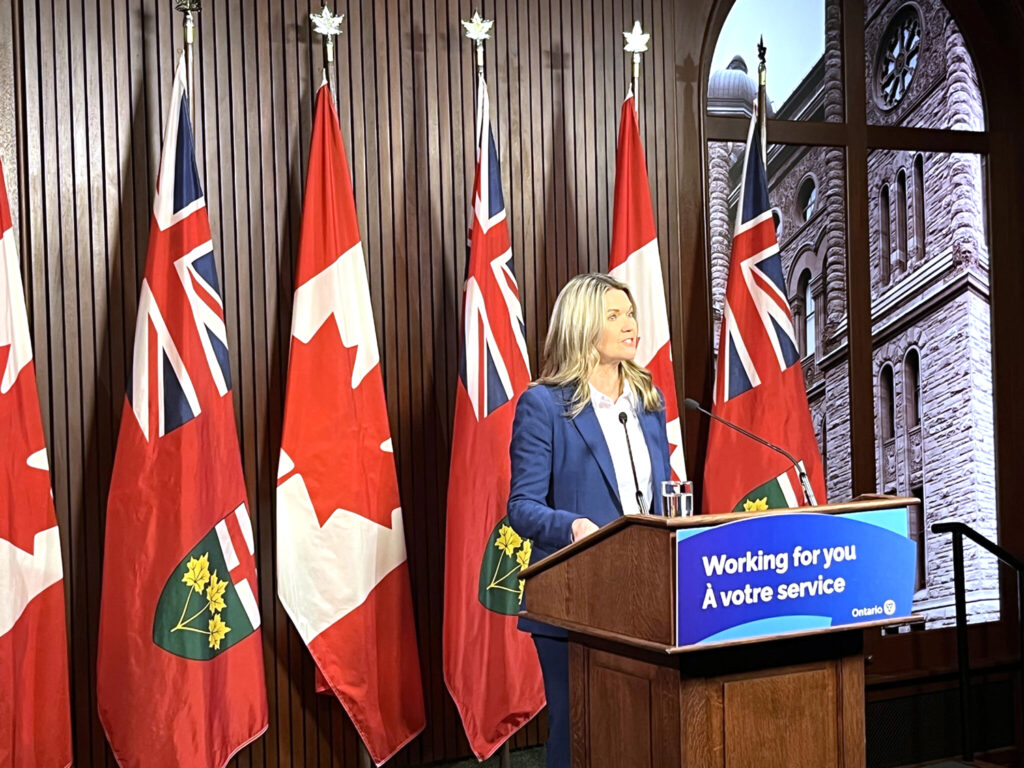
Tuition at Ontario colleges and universities will remain frozen for another three years, although institutions can raise fees for out-of-province students by five per cent, the provincial government said Monday.
At a press conference, Minister of Colleges and Universities Jill Dunlop also announced a $1.3 billion increase in funding for post-secondary institutions. During official responses held after the conference, Representatives from opposition parties said the cash injection, which will be spread over three years, falls short of what is required and is less than what the provincial government’s own Blue Ribbon panel recommended in 2023.
“When our government first took office, Ontario had the highest tuition fees in Canada,” said Dunlop during the announcement. “I am proud that under Premier Ford, we put student affordability front and centre by cutting student fees by 10 per cent, and holding the line against future increases.”
Peggy Sattler, the NDP’s critic for colleges and universities, said she agrees with the Conservative government’s decision to extend the tuition freeze, first implemented in 2019. But the funding increase, she told reporters after the minister spoke, is “not going to do anything to deal with the $1.9 billion revenue hole that was created by the freeze.”
Liberal MPP Adil Shamji also said the provincial government has enough money to add an extra billion dollars to the $1.3 billion budget increase to adequately help universities and colleges, while speaking after Dunlop’s announcement.
“We know this government consistently underspends every quarter according to the financial accountability office to the tune of billions of dollars,” said Shamji during the press conference.
Green leader Mike Schreiner said not enough new money is being added to the system, while speaking to reporters at a press conference. He also rejected Dunlop’s claim that the federal government’s decision to cap the number of international students allowed into Canada this year and next was an “unexpected and unilateral decision” that disrupted Ontario’s education system.
At the press conference, Schreiner said, “All of us had lots of warning last summer and last fall where the federal government was giving indications they would make changes to the number of international students being admitted to the country.”
The Council of Ontario Universities said in a press release that if the government followed the Blue Ribbon panel’s recommendations, it would be injecting an additional $2.5 billion into post-secondary institutions.
The Blue Ribbon panel reported that Ontario spends $6,891 per college student compared to the $15,615 for the rest of Canada. Similarly, the province spends $11,471 per university student, which is only about 57 per cent of spending for the rest of Canada.
The additional $1.3 billion will include:
- $23 million to support student mental health.
- $903 million over three years for a post-secondary education sustainability fund. This includes $700 million dollars for base support, and $200 million set aside for “additional top-up funding” to support institutions with greater financial need.
- about $65 million to support research and innovation.
- $100 million on STEM program costs at institutions with enrolment above currently funded levels.
- $168 million to cover capital renewal and equipment.
- a $10 million top up for northern, small, rural colleges and universities.
None of the budget is mandated to specifically help students with disabilities.
Dunlop said addressing the needs of students with physical and intellectual/learning disabilities is something post-secondary institutions can decide upon themselves. She also said York University is autonomous in handling its ongoing strikes.

